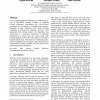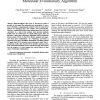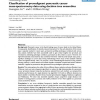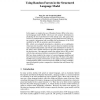33 search results - page 3 / 7 » Investigation of Random Forest Performance with Cancer Micro... |
ACSC
2005
IEEE
13 years 11 months ago
2005
IEEE
Novel, high-throughput technologies are challenging the core of algorithmic methods available in Computer Science. Microarray technologies give Life Sciences researchers the oppor...
BIBE
2007
IEEE
13 years 11 months ago
2007
IEEE
—High-throughput data such as microarrays make it possible to investigate the molecular-level mechanism of cancer more efficiently. Computational methods boost the microarray ana...
BMCBI
2008
13 years 5 months ago
2008
Background: Pancreatic cancer is the fourth leading cause of cancer death in the United States. Consequently, identification of clinically relevant biomarkers for the early detect...
BMCBI
2010
13 years 5 months ago
2010
Background: In the study of cancer genomics, gene expression microarrays, which measure thousands of genes in a single assay, provide abundant information for the investigation of...
NIPS
2004
13 years 6 months ago
2004
In this paper, we explore the use of Random Forests (RFs) in the structured language model (SLM), which uses rich syntactic information in predicting the next word based on words ...




